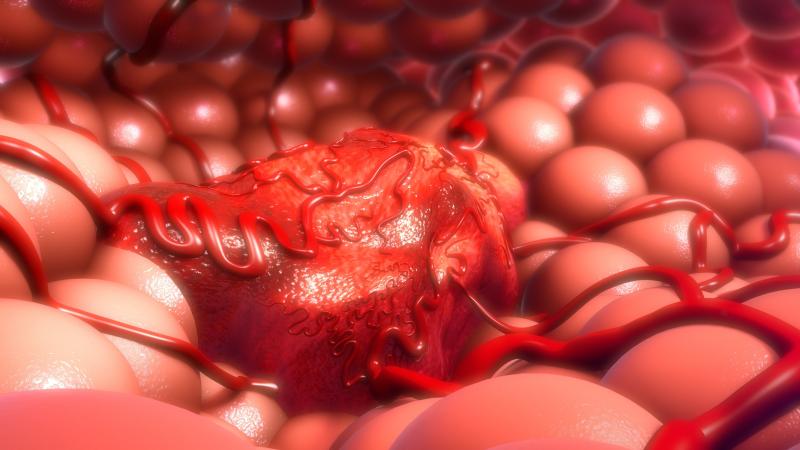
Debulking tumour with two cycles of obinutuzumab prior to initiating frontline venetoclax therapy is effective for patients with absolute lymphocyte count (ALC) >25 × 109/L and lymph nodes <5 cm, with a success rate of >98 percent, and the addition of bendamustine to this therapy improves debulking for those with nodes 5–10 cm, according to a study presented at the 61st Annual Meeting and Exposition of the American Society of Hematology (ASH 2019).
“Patients with nodes >5 cm treated with obinutuzumab or >10 cm treated with obinutuzumab plus bendamustine may need >2 cycles to achieve low tumour burden,” the researchers said.
“Debulking via obinutuzumab, with or without bendamustine, may allow more patients to be administered venetoclax in the outpatient setting, eliminating the need for hospitalization during venetoclax initiation,” they added.
Sixty-nine patients were treated, of whom 60 (87 percent) were <75 years old, 56 (81 percent) had ALC ≥25 × 109/L, 56 (81 percent) had medium tumour lysis syndrome (TLS) risk, and 36 (52 percent) had Rai stage 1/2 (32 percent had Rai stage 3/4). Fifty patients had debulking with obinutuzumab alone and 19 with added bendamustine (11 percent; 2/19 added bendamustine at cycle 3+). Fifty-one patients completed debulking, and 18 are ongoing. [ASH 2019, abstract 3042]
Seventy-seven percent of evaluable patients (40/52) achieved low tumour burden after two cycles of debulking, 94 percent (45/48) after four cycles, and 98 percent (46/47) after six cycles. ALC decreased to <25 × 109/L in 98 percent (50/51) of patients after two cycles of obinutuzumab, with (7/8) or without (43/43) bendamustine.
Among patients treated with obinutuzumab alone, four with lymph nodes 5–10 cm were debulked to <5 cm by 4 cycles of therapy. Among those treated with obinutuzumab plus bendamustine, all four evaluable patients with lymph nodes 5–10 cm were debulked to <5 cm within 2 cycles, and three with nodes >10 cm were debulked to <5 cm by 4 cycles.
“Safety signals were consistent with the known profiles of bendamustine, obinutuzumab and venetoclax,” the researchers said.
The most common adverse events (AEs; >30 percent) were as follows: infusion-related reactions (71 percent; all grade 1–2, nausea (39 percent), headache (35 percent) and fatigue (32 percent). The most frequently reported grade 3+ AEs were neutropaenia (28 percent) and thrombocytopaenia (10 percent).
Five patients (7 percent) had TLS in the debulking phase. Three additional patients were reported to have laboratory TLS in a retrospective analysis using Howard criteria for TLS; two occurred during the debulking phase and one during the venetoclax phase, all driven by venetoclax ramp up.
The patient with TLS during venetoclax treatment had uric acid levels below the institutional upper limit of normal, which did not require management. None of the patients were hospitalized during venetoclax ramp up.
This single-arm, open-label, phase IIIb trial included patients with previously untreated chronic lymphocytic leukaemia (CLL) or small lymphocytic lymphoma, an Eastern Cooperative Oncology Group performance score of ≤1, and a medium (any lymph node 5 to <10 cm or ALC ≥25 × 109/L) or high (any lymph node ≥10 cm or ALC ≥25 × 109/L and any lymph node ≥5 cm) tumour burden.
Tumour debulking with obinutuzumab, with or without bendamustine, was conducted in these patients for a maximum of six 28-day cycles until low tumour burden was achieved, followed by treatment with venetoclax plus obinutuzumab.
“Venetoclax is an effective oral agent for frontline treatment of patients with CLL,” the researchers said. “Due to the rapid induction of cell death caused by the targeted activity of venetoclax, some patients require inpatient monitoring for TLS at initiation of therapy.”